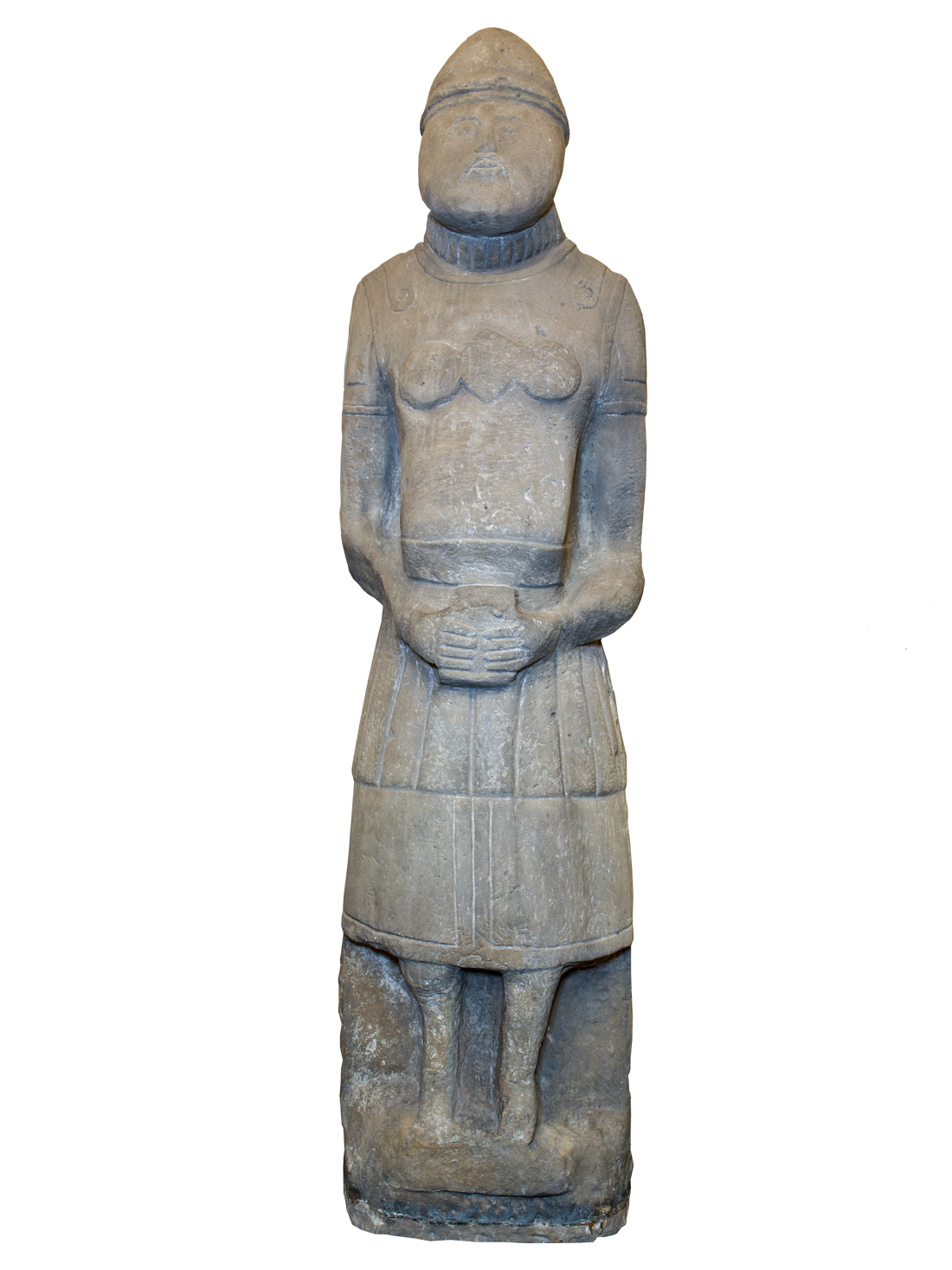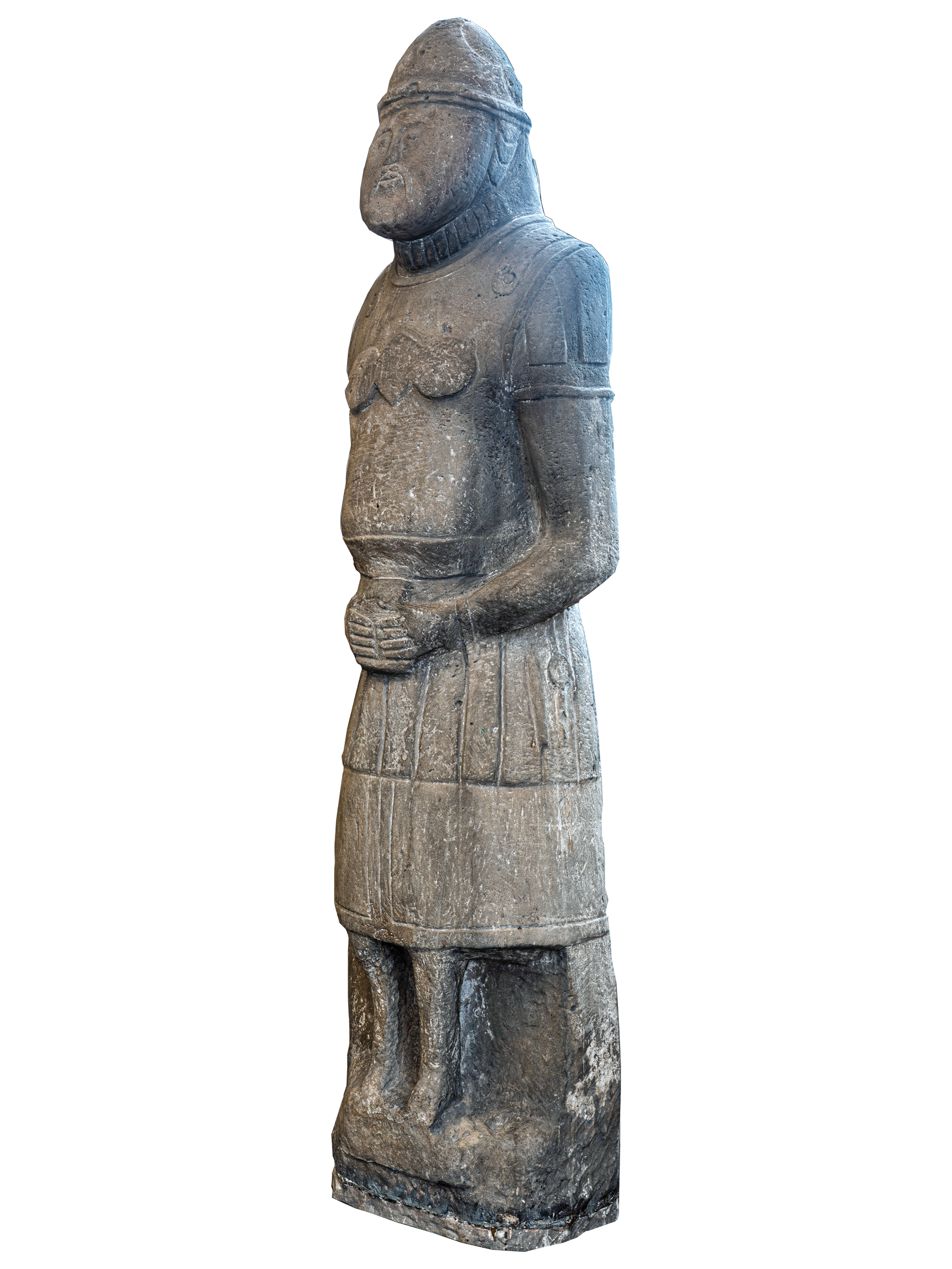Cuman (Polovtsian) statue



Stone statues, known in Rus’ as “stone "Baba” (“Baba” stands for forefather), were placed on high places in memory of deceased ancestors-heroes, men and women. Religious rites and funeral feasts were held near them.
The statue in Hall # 10 depicts a noble warrior. The warrior wears a chichak helmet with a double convex Hoops and overlay figured curly plaquettes. A face with heavy cheeks and a full chin is definitely a portrait. Eyebrows and nose are T-shaped, small oval eyes, moustache with hanging tips.
The warrior is dressed in a caftan (long jacket), breastplate covering his chest and abdomen. On the shoulders the armor is fixed with bands. On his chest is a figured badge.
One can also see a knife and a whip on side of the warrior.
Cumans (Polovtsians) appeared near the limits of Rus’ in the middle of the XI century (first mention in records in 1055). For two centuries they remained close neighbors: sometimes implacable enemies of Rus’; sometimes allies of the Russian Princes in their internecine wars.
Main occupation of Cumans (Polovtsians) was cattle breeding that made them move from place to place. Besides cattle breeding, war and hunting largely determined the economy, social system and life of the Cumans (Polovtsians).
Polovtsy (Cumans) were pagans and as many other nomads they worshipped the sun, the moon, believed in magical properties of rivers, etc. An important element of their religious vision was the Cult of Ancestors, which is confirmed by widespread use of Polovtsian stone sculptures, called “Polovtsian Baba”.
Statues were most often made in two postures: standing and sitting. It is characteristic that male statues were usually depicted with weapons (sabers, bows and quivers). It should be noted that there were more women’s images than those of men: this must be a direct evidence of special status of women within Polovtsian (Cuman) society. Women were considered direct progenitors of genus, possibly that account of kinship in the Polovtsian genera was conducted along maternal line.


